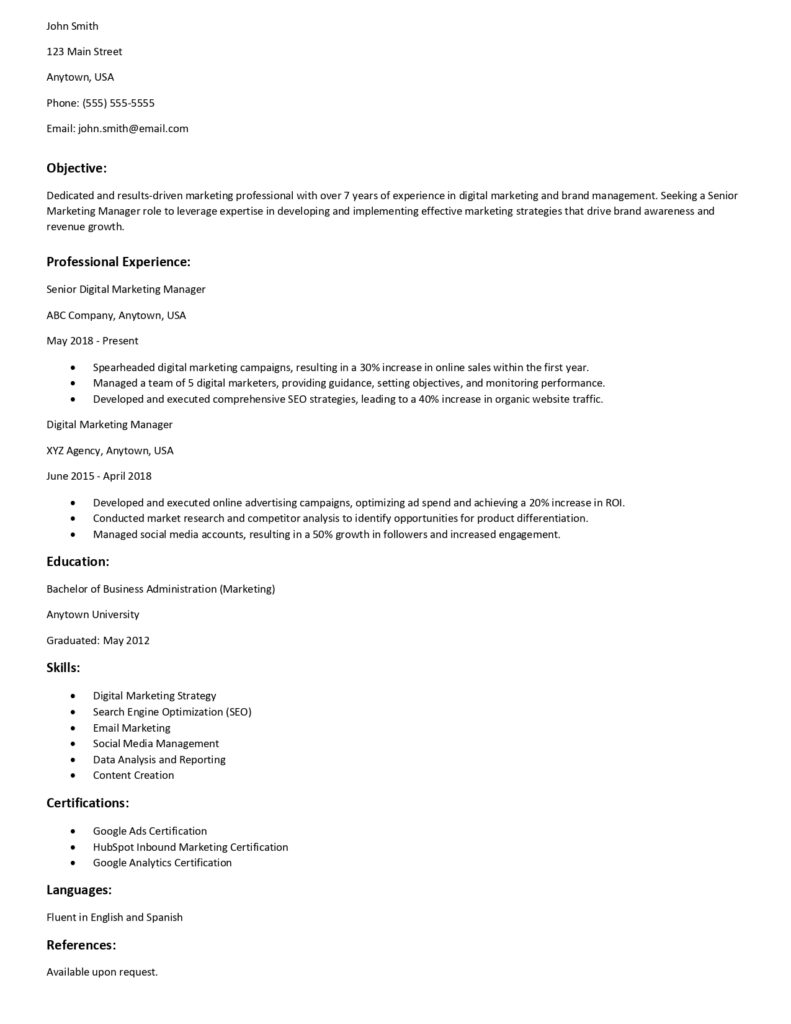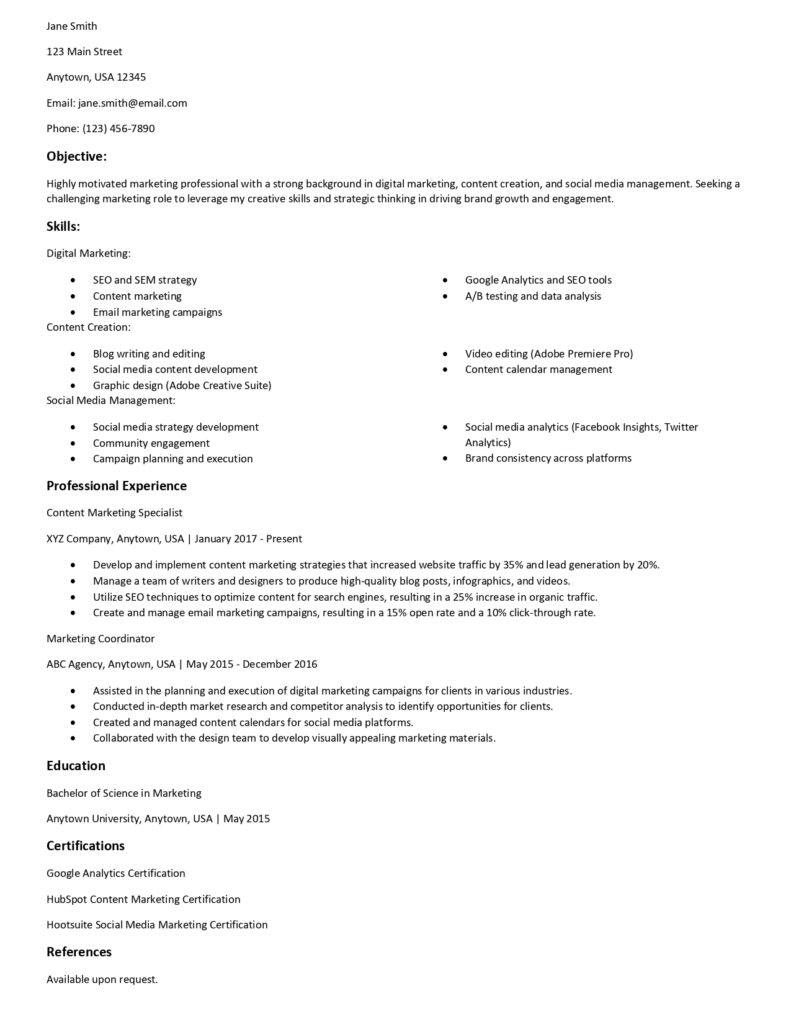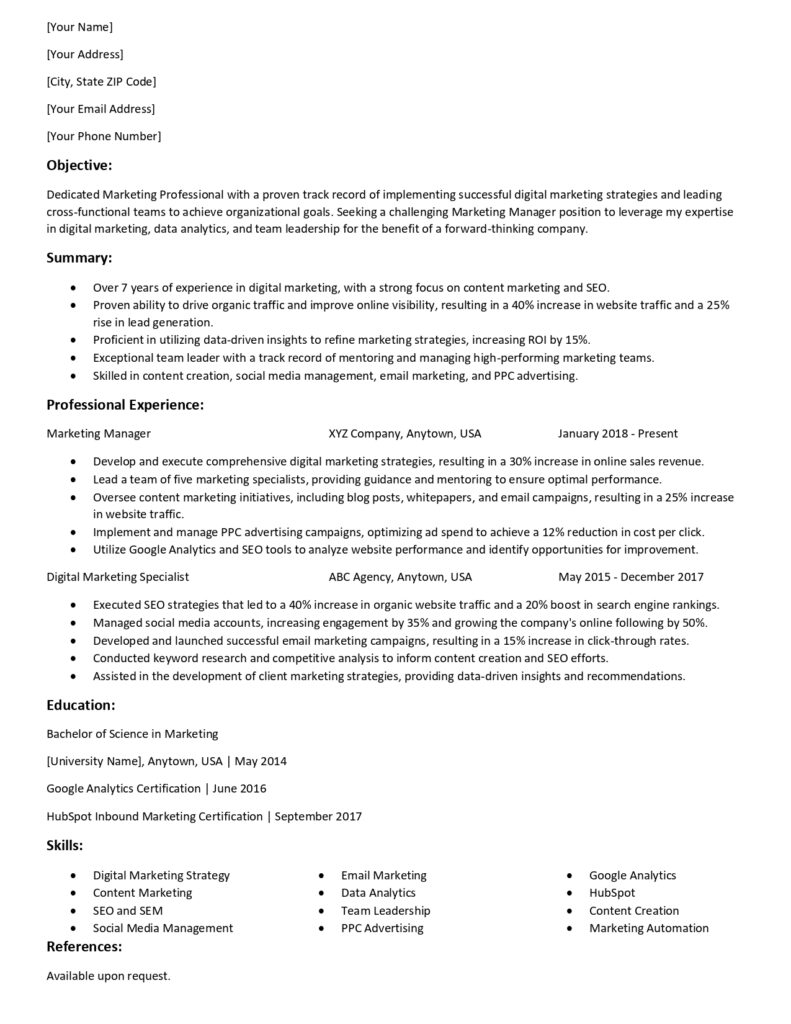Looking for the best resume format to land your dream job?
We’ve got you covered. Learn how to choose the right resume format for your experience and the job you’re applying for.
Plus, get tips on writing a great resume that will stand out from the competition.
Your resume plays a crucial role in making a strong first impression on potential employers, so it’s essential to choose the right format to showcase your qualifications effectively.
Table of Contents
3 Best Resume Formats
There are three primary resume formats to consider: reverse chronological, functional, and combination.
1. Reverse Chronological Format
The reverse chronological format is the most common and widely favored resume format. It’s like the dependable classic in your wardrobe that never goes out of style. This format arranges your work history in reverse chronological order, meaning your most recent job is listed first, followed by previous roles in reverse order.
Alongside each job entry, you include the company name, your job title, and the dates of your employment. Moreover, you provide a concise but impactful overview of your key job duties and responsibilities.
Example

Who Should Consider It?
- Job seekers with a robust work history in their specific field.
- Applicants targeting positions that require a strong track record of experience or specific skills.
2. Functional Format
The functional resume format is like a makeover that highlights your skills and abilities rather than your work experience. It’s an excellent choice for those embarking on a career change, individuals with limited work experience, or those who need to address employment gaps. To craft a functional resume, begin by compiling a list of your skills and abilities.
Then, categorize them into sections and provide brief descriptions, along with examples of how you’ve applied these skills in the past.
Example

Who Should Consider It?
- Job seekers who want to spotlight their skills and abilities over their work history.
- Those switching careers or with limited work experience.
3. Combination Format
The combination resume format is a hybrid of the reverse chronological and functional formats.
It takes the best of both worlds to present your work history in reverse chronological order while also featuring a dedicated skills section that emphasizes your most relevant skills and abilities. This format provides a balanced approach to showcasing your qualifications.
Example:

Who Should Consider It?
- Job seekers seeking to emphasize both their work experience and skills.
- Applicants vying for positions that require a blend of specific skills and experience.
Choosing the Right Format for You
Selecting the optimal resume format hinges on your individual circumstances and the specific job you’re aiming for. Here are essential considerations to guide your decision:
1. Work experience
If you possess a strong work history in your field, the reverse chronological format is often the best choice.
For individuals with limited experience or those navigating career transitions, the functional or combination format may prove more effective.
2. Job target
Consider the nature of the position you’re pursuing. Conventional fields like accounting or finance typically align with the reverse chronological format.
Conversely, creative industries like design or advertising may warrant a more innovative resume format.
3. Resume writing skills
Your confidence and proficiency in resume writing are crucial factors.
If you’re comfortable crafting a clear and concise resume, any of the three primary formats can work.
Those seeking simplicity and readability, particularly when struggling with resume composition, often find the reverse chronological format to be the most straightforward.
In Conclusion
The choice of resume format can significantly impact your job search success. It’s a decision that demands thoughtful consideration, reflecting your unique qualifications and the targeted job’s requirements.

